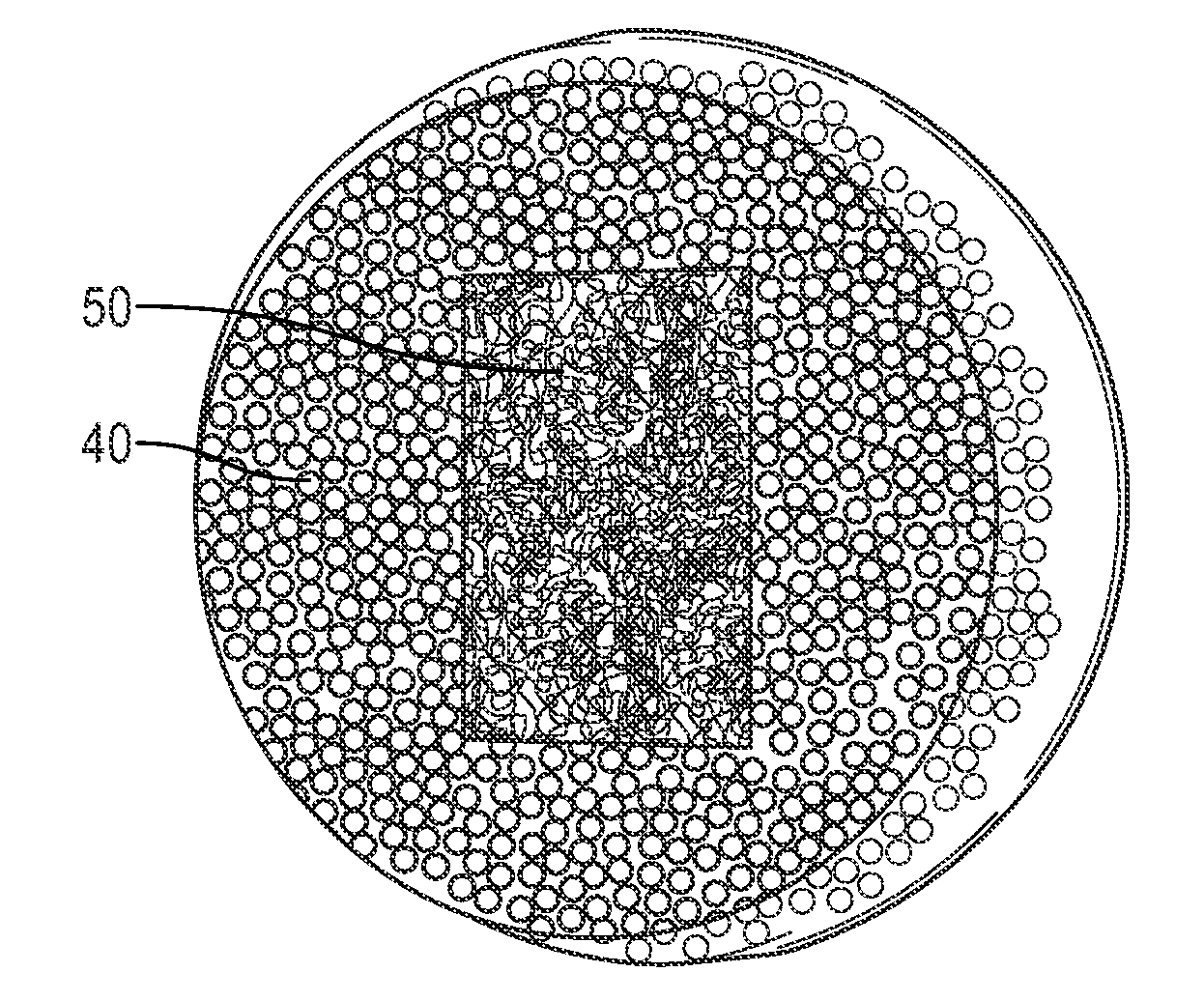Reduced Weight Equine Orthotic Pad and Method
a technology of orthotic pads and equine bodies, applied in the field of orthotic pads, can solve the problems of reducing performance, reducing performance, and high thermal conductivity, and achieve the effects of improving thermal insulation, reducing weight, and improving thermal insulation
- Summary
- Abstract
- Description
- Claims
- Application Information
AI Technical Summary
Benefits of technology
Problems solved by technology
Method used
Image
Examples
Embodiment Construction
[0017]This invention is a flexible, cushioning, shock-absorbing pad with low thermal conductivity and low weight per volume, and, in one embodiment, a process for making such pads by dispersing spheroids in one or more elastomeric materials. In broad aspect, the pads of the invention are comprised of a mixture of spheroids and flexible, elastic materials designed to be placed in a boot beneath an animal hoof. The spheroids may be incorporated into all or any selected portion of the pad.
[0018]In one preferred embodiment, the major amount of spheroids is dispersed in the lower or bottom portion of the pad. The top portion provides a durable, elastic surface for the equine hoof, while the spheroids in the bottom portion increase thermal insulation and decrease total weight of the pad. The spheroids are comprised of a flexible material, preferably expanded foam or other cellular material, and are of a size conducive to dispersion in the elastomer(s) of the pad to create a strong matrix....
PUM
| Property | Measurement | Unit |
|---|---|---|
| diameters | aaaaa | aaaaa |
| diameter | aaaaa | aaaaa |
| diameters | aaaaa | aaaaa |
Abstract
Description
Claims
Application Information
 Login to View More
Login to View More - R&D
- Intellectual Property
- Life Sciences
- Materials
- Tech Scout
- Unparalleled Data Quality
- Higher Quality Content
- 60% Fewer Hallucinations
Browse by: Latest US Patents, China's latest patents, Technical Efficacy Thesaurus, Application Domain, Technology Topic, Popular Technical Reports.
© 2025 PatSnap. All rights reserved.Legal|Privacy policy|Modern Slavery Act Transparency Statement|Sitemap|About US| Contact US: help@patsnap.com



